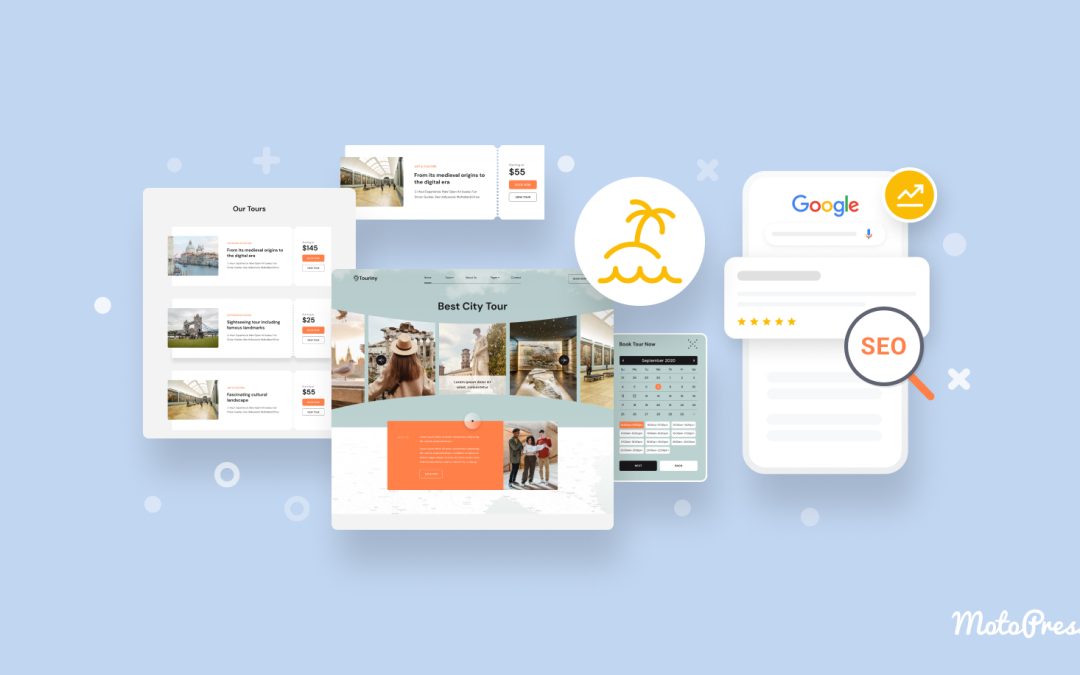Table of Contents
- 1 Importance of SEO for Travel Websites
- 2 Why travel websites need SEO
- 3 Benefits of SEO for travel websites
- 4 Keyword Research for Travel Websites
- 5 Optimizing Website Structure and Navigation
- 6 On-Page SEO for Travel Websites
- 7 Technical SEO for Travel Websites
- 8 Local SEO for Travel Websites
- 9 Link Building Strategies for Travel Websites
- 10 Content Marketing for Travel Websites
- 11 Social Media Optimization for Travel Websites
- 12 Monitoring and Analyzing SEO Performance
So you’ve got a travel website, but you’re struggling to attract visitors and drive traffic? Don’t worry, you’re not alone. In today’s digital age, having effective SEO strategies in place is crucial for any website, and travel websites are no exception. SEO for travel websites involves optimizing your content, improving your website’s overall structure, and implementing various marketing techniques to increase your website’s visibility on search engines. By understanding and implementing SEO techniques specific to the travel industry, you can boost your website’s rankings, attract more organic traffic, and ultimately increase bookings and revenue.

Importance of SEO for Travel Websites
When it comes to travel websites, SEO is not just an option – it’s a necessity. In an industry that is highly competitive and ever-evolving, having a strong online presence is crucial for attracting potential customers and staying ahead of the competition. SEO can help travel websites improve their visibility in search engine results, drive organic traffic to their site, and ultimately increase conversions and revenue.
Why travel websites need SEO
Travel websites need SEO because it helps them reach their target audience and connect with potential customers. When people are planning a trip or looking for travel-related information, they turn to search engines like Google. By implementing SEO strategies, travel websites can ensure that they appear in the search results for relevant keywords and queries.
Without SEO, travel websites risk being overshadowed by their competitors and missing out on valuable organic traffic. By optimizing their website and content, travel websites can improve their ranking in search engine results, increase their visibility, and ultimately attract more visitors to their site.
Benefits of SEO for travel websites
The benefits of SEO for travel websites are numerous. Firstly, SEO helps in improving the visibility and ranking of a travel website in search engine results. By appearing on the first page of search results, travel websites can increase their chances of being clicked on by users.
Secondly, SEO helps in increasing organic traffic to a travel website. When a travel website ranks higher in search engine results, it receives more organic traffic from users who are actively searching for travel-related information or services.
Thirdly, SEO can improve the overall user experience of a travel website. By optimizing website structure and navigation, travel websites can make it easier for users to navigate through their site, find the information they need, and ultimately have a positive user experience.
Lastly, SEO can lead to higher conversions and revenue for travel websites. When a travel website appears on the first page of search results and attracts targeted organic traffic, the chances of users booking a trip or purchasing a service increases significantly.
Keyword Research for Travel Websites
Understanding target audience and their search intents
To effectively conduct keyword research for a travel website, it is essential to first understand the target audience and their search intents. Different travelers have different preferences, interests, and needs when it comes to planning a trip. By understanding the target audience, travel websites can identify the keywords and search terms that are most relevant to them.
For example, if a travel website targets adventure travelers, they might want to focus on keywords related to adventurous activities, outdoor destinations, and adrenaline-pumping experiences. On the other hand, if a travel website caters to luxury travelers, they might want to target keywords related to luxury accommodations, high-end destinations, and exclusive experiences.
Using keyword research tools
Keyword research tools are invaluable resources for travel websites looking to optimize their content for relevant keywords. There are several tools available that can help travel websites identify popular keywords, search volumes, and competition levels.
Some popular keyword research tools include Google Keyword Planner, SEMrush, and Moz Keyword Explorer. These tools provide insights into the search volume, keyword difficulty, and related keywords for specific search terms. By utilizing these tools, travel websites can uncover new keyword opportunities and refine their SEO strategy.
Identifying high-potential keywords for travel websites
When it comes to keyword research for travel websites, it’s important to focus on high-potential keywords. These are the keywords that have a high search volume and a relatively low competition level. By targeting these keywords, travel websites can increase their chances of ranking higher in search engine results and attracting more organic traffic.
High-potential keywords can be identified by analyzing search volume, competition levels, and relevancy to the target audience. It’s important to strike a balance between keywords that have a high search volume and those that are specific to the target audience. By targeting long-tail keywords (more specific and niche-focused), travel websites can increase their chances of ranking higher and attracting more targeted traffic.
Long-tail vs short-tail keywords
When it comes to keyword research for travel websites, it’s important to consider both long-tail and short-tail keywords. Long-tail keywords are more specific and niche-focused, while short-tail keywords are more general and broad.
While short-tail keywords may have a higher search volume, they also have a higher competition level. On the other hand, long-tail keywords may have a lower search volume, but they also have a lower competition level. By targeting a combination of both long-tail and short-tail keywords, travel websites can optimize their content for a broader range of search intents and increase their chances of ranking higher in search engine results.
Competitor analysis for keyword research
Competitor analysis is an important aspect of keyword research for travel websites. By analyzing the keywords that their competitors are targeting, travel websites can gain valuable insights and identify new keyword opportunities.
Competitor analysis can be done by conducting a keyword gap analysis, where travel websites compare their keywords with those of their competitors. By identifying keywords that their competitors are ranking well for, travel websites can optimize their content for those keywords and increase their chances of outranking them in search engine results.
Additionally, travel websites can also analyze the content strategies of their competitors to gain insights into which keywords, topics, and content formats are performing well in the travel industry. This can help them refine their own SEO strategy and create more relevant and engaging content for their target audience.
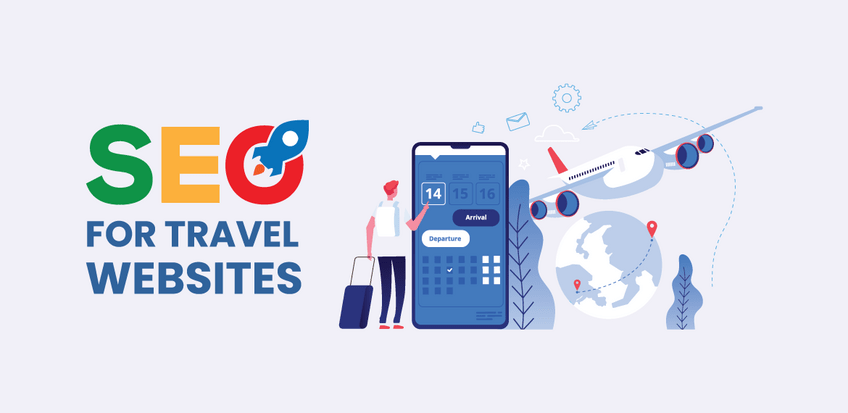
Creating clear and intuitive website structure
Having a clear and intuitive website structure is essential for both users and search engines. A well-organized and logically structured website makes it easier for users to navigate through the site, find the information they need, and ultimately have a positive user experience.
When designing the structure of a travel website, it’s important to consider the user journey and ensure that the most important and relevant information is easily accessible. For example, the main navigation menu should include categories or sections that cover the different aspects of travel, such as destinations, accommodations, activities, and travel tips.
Additionally, travel websites can also include internal links within their content to further enhance the website structure. This allows users to easily navigate between related pages and discover more valuable content.
Optimizing URL structure
Optimizing the URL structure of a travel website is an important aspect of SEO. A clean and descriptive URL not only helps search engines understand the content of the page but also provides a better user experience.
When optimizing the URL structure, it’s important to use relevant keywords and keep the URLs concise and descriptive. For example, instead of using a generic URL like “www.travelwebsite.com/page1”, it’s better to use a URL like “www.travelwebsite.com/destinations/paris” for a page about Paris destinations.
It’s also important to use hyphens to separate words in the URL, as search engines consider hyphens as word separators. Avoid using special characters, numbers, or irrelevant words in the URL, as they can make it harder for search engines and users to understand the content of the page.
Breadcrumbs and navigation menus are important elements for optimizing the website structure and navigation of a travel website. Breadcrumbs provide users with a hierarchical navigation trail, making it easier for them to understand where they are on the website and navigate back to previous pages.
Navigation menus, on the other hand, provide users with a clear and organized list of the main sections or categories of the website. It’s important to keep the navigation menu concise, easy to understand, and consistent across all pages of the website. This helps users quickly navigate to the desired section or page without confusion.
From an SEO perspective, breadcrumbs and navigation menus are also important because they provide internal links that help search engines understand the structure and hierarchy of the website. By optimizing breadcrumbs and navigation menus, travel websites can improve their website’s crawlability and indexability.
Implementing XML sitemap
An XML sitemap is a file that lists all the pages of a website and provides important information about each page, such as the last modified date and the importance of the page relative to other pages on the website. Implementing an XML sitemap is important for travel websites because it helps search engines discover and index all the pages of the site.
By having a well-structured XML sitemap, travel websites can ensure that search engines can easily find and crawl all the pages of the site, including new or updated pages. This helps in improving the website’s visibility in search engine results and ensures that users can find relevant content.
There are several tools and plugins available that can help travel websites generate and update their XML sitemap automatically. It’s important to regularly update the XML sitemap to reflect any changes or additions to the website.
Improving website speed and mobile-friendliness
Website speed and mobile-friendliness are two crucial factors that can significantly impact the user experience and SEO of a travel website.
Improving website speed involves optimizing various aspects of the website, such as reducing file sizes, enabling browser caching, minifying CSS and JavaScript files, and optimizing images. Travel websites can use tools like PageSpeed Insights or GTmetrix to test their website’s speed and identify areas of improvement.
Mobile-friendliness is equally important, as an increasing number of users access websites through their mobile devices. Travel websites should ensure that their website is fully responsive and looks and functions well on different screen sizes. They can use Google’s Mobile-Friendly Test to check if their website meets the mobile usability standards.
By improving website speed and mobile-friendliness, travel websites can provide a better user experience, increase the chances of ranking higher in search engine results, and ultimately generate more organic traffic and conversions.
On-Page SEO for Travel Websites
Writing high-quality and unique content
Creating high-quality and unique content is at the core of on-page SEO for travel websites. By producing informative, engaging, and original content, travel websites can attract and retain users, increase their credibility, and improve their chances of ranking higher in search engine results.
When creating content for a travel website, it’s important to focus on providing value to the target audience. This can be done by offering travel tips, destination guides, itinerary suggestions, or insider recommendations. By addressing the needs and interests of the target audience, travel websites can establish themselves as authoritative sources of information and attract organic traffic.
It’s also important to regularly update and refresh the content on a travel website to keep it relevant and up-to-date. This can involve adding new destinations, updating travel information, or incorporating user-generated content and testimonials.
Optimizing title tags and meta descriptions is a fundamental aspect of on-page SEO for travel websites. Title tags and meta descriptions are HTML elements that provide concise summaries of the content of a web page.
When optimizing title tags, it’s important to include relevant keywords and make them descriptive and compelling. The title tag should accurately reflect the content of the page and entice users to click through to the website. It’s also important to keep the title tag within the recommended length of 50-60 characters to ensure that it is fully displayed in search engine results.
Similarly, meta descriptions should be optimized with relevant keywords and provide a clear and concise summary of the page’s content. The meta description should also be within the recommended length of 150-160 characters to ensure that it is fully displayed in search engine results.
By optimizing title tags and meta descriptions, travel websites can increase their click-through rates in search engine results and improve their chances of attracting organic traffic.
Using relevant and optimized headings (H1-H6)
Headings play a vital role in both the user experience and SEO of a travel website. By using relevant and optimized headings (H1-H6), travel websites can provide a clear and organized structure to their content, make it easier for users to scan and understand the information, and help search engines understand the hierarchy of the page.
The H1 heading is the most important heading on a page and should typically represent the main topic or focus of the page. All other headings (H2-H6) should follow a logical hierarchy and be used to break down and organize the content into relevant sections.
It’s important to include relevant keywords in the headings to improve their SEO value. However, it’s equally important to ensure that the headings are informative, easy to read, and provide value to the users. Travel websites should avoid keyword stuffing and focus on creating headings that accurately reflect the content and context of the page.
Including keywords naturally within the content
Including keywords naturally within the content is essential for on-page SEO. By incorporating relevant keywords into the content, travel websites can improve their chances of ranking higher for those keywords and attract more organic traffic.
When including keywords within the content, it’s important to do so in a natural and meaningful way. Keyword stuffing, or overusing keywords, can harm the user experience and SEO of a travel website. Instead, keywords should be used strategically and sparingly, focusing on providing value to the users.
Travel websites can include keywords in the page’s introduction, headings, subheadings, and throughout the body of the content. It’s important to ensure that the keywords are relevant to the topic and context of the page and flow naturally within the content.
Images play an important role in enhancing the user experience and engagement on a travel website. By using high-quality and relevant images, travel websites can capture the attention of users and make the content more visually appealing.
However, search engines cannot understand the content of images like humans do. To optimize images for SEO, travel websites should use descriptive alt tags. Alt tags are HTML attributes that provide alternative text for an image when it cannot be displayed or accessed.
When optimizing alt tags, it’s important to include relevant keywords and provide a concise and accurate description of the image. Travel websites should avoid using generic or spammy alt tags and focus on creating meaningful and descriptive alt tags that enhance both the user experience and SEO value of the website.
Implementing internal linking strategy
Implementing an internal linking strategy is an effective way to improve the user experience, website structure, and SEO of a travel website. Internal linking involves linking to other relevant pages within the website from within the content.
By including internal links, travel websites can help users navigate through the site, discover related content, and stay engaged on the website for longer periods of time. Internal linking also helps search engines understand the structure and hierarchy of the website, and distribute link equity across different pages.
When implementing an internal linking strategy, it’s important to use descriptive anchor text that accurately reflects the content of the linked page. It’s also important to link to relevant and authoritative pages within the website that provide additional value to the users. Travel websites can utilize category pages, destination guides, or related blog posts for internal linking purposes.
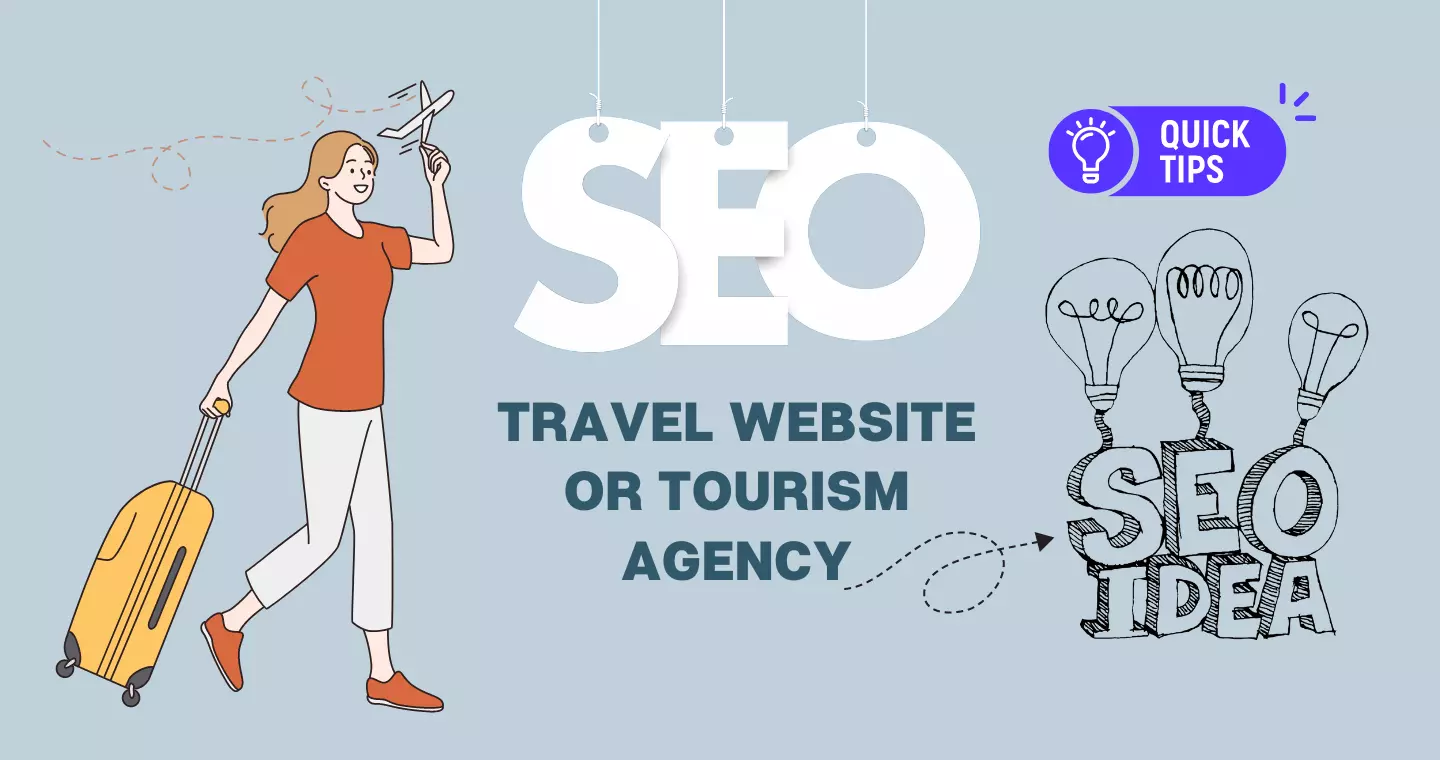
Technical SEO for Travel Websites
Optimizing website loading speed
Optimizing website loading speed is essential for both user experience and SEO. Slow-loading websites can lead to higher bounce rates, lower engagement, and decreased rankings in search engine results.
To optimize website loading speed, travel websites can implement various techniques, such as compressing images, minifying CSS and JavaScript files, enabling browser caching, and optimizing server response time. Travel websites can use tools like Google PageSpeed Insights or GTmetrix to test their website’s speed and identify areas of improvement.
Additionally, selecting a reliable and fast web hosting provider is also crucial for website loading speed. Travel websites should choose a hosting provider with a good track record in terms of uptime, server response time, and scalability.
By improving website loading speed, travel websites can provide a better user experience, increase the chances of ranking higher in search engine results, and ultimately attract more organic traffic and conversions.
Ensuring mobile optimization
With mobile usage on the rise, ensuring mobile optimization is a must for travel websites. Mobile optimization involves creating a responsive design that adapts to different screen sizes and provides a seamless user experience across desktop, mobile, and tablet devices.
When it comes to mobile optimization, it’s important to ensure that the website is easy to navigate, the content is easily readable, and the website loads quickly on mobile devices. Travel websites should pay attention to font sizes, button sizes, and spacing to ensure that users can interact with the website easily on smaller screens.
Google has also introduced mobile-first indexing, which means that the mobile version of a website is the primary version used by Google for indexing and ranking. Travel websites should prioritize mobile optimization to ensure that they are not penalized in search engine rankings.
Implementing SSL certificate
Implementing an SSL (Secure Socket Layer) certificate is important for travel websites, especially those that handle sensitive user information such as payment details or personal information. An SSL certificate encrypts the data transmitted between the user’s browser and the website, providing a secure connection.
In addition to enhancing security, having an SSL certificate is also beneficial for SEO. Google has confirmed that SSL is a ranking signal, meaning that websites with HTTPS (Hypertext Transfer Protocol Secure) are given a slight ranking boost in search engine results.
By implementing an SSL certificate, travel websites can ensure the security of user data, build trust with users, and improve their chances of ranking higher in search engine results.
Improving website crawlability for search engines
Ensuring that a travel website is easily crawlable by search engines is essential for better visibility in search engine results. Search engine crawlers use automated bots to scan and index websites, so it’s important to make sure that they can access and understand a website’s content.
To improve website crawlability, travel websites should avoid using URL parameters and dynamic URLs, as they can confuse search engine crawlers. Instead, travel websites should use static URLs that are descriptive and include relevant keywords.
It’s also important to create a sitemap.xml file and submit it to search engines through Google Search Console. The sitemap helps search engine crawlers discover and index all the pages of a website, improving its visibility in search engine results.
Additionally, travel websites should avoid blocking search engine crawlers from accessing important parts of the site through robots.txt files. It’s important to regularly check the website’s robots.txt file and ensure that there are no unintentional blocks that can hinder the crawling and indexing process.
Fixing broken links and 404 errors
Broken links and 404 errors can negatively impact both user experience and SEO. When users encounter broken links or 404 errors, it can lead to frustration and increase the chances of them leaving the website.
To fix broken links, travel websites should regularly conduct link audits to identify any broken or dead links. They can use tools like Screaming Frog or Google Search Console to crawl the website and identify broken links.
Once broken links are identified, travel websites should either remove the broken links or redirect them to relevant and functioning pages. Redirects can be done through 301 redirects, which inform search engines that the page has permanently moved to a new location.
By fixing broken links and 404 errors, travel websites can provide a better user experience, ensure the integrity of their website’s link structure, and improve their chances of ranking higher in search engine results.
Implementing structured data markup
Implementing structured data markup, also known as schema markup, is an advanced technique that can enhance the visibility and appearance of a travel website in search engine results.
Structured data markup provides additional information to search engines about the content of a web page, such as reviews, ratings, prices, dates, and locations. By including structured data markup, travel websites can appear in rich snippets, knowledge panels, and other rich search results, making their listings more eye-catching and informative.
There are several types of structured data markup that are relevant to travel websites, such as the schema.org markup for hotels, flights, destinations, and reviews. Travel websites can use Google’s Structured Data Testing Tool to test and validate their structured data markup.
By implementing structured data markup, travel websites can stand out in search engine results, increase their click-through rates, and provide users with more detailed and useful information.
Local SEO for Travel Websites
Optimizing Google My Business listing
Optimizing the Google My Business listing is crucial for travel websites that serve a specific location or cater to local customers. Google My Business is a free tool that allows businesses to manage their online presence across Google Search and Maps.
To optimize the Google My Business listing, travel websites should claim their business profile and provide accurate and up-to-date information, such as the business name, address, phone number, website, and hours of operation. They should also select relevant categories that accurately represent their business.
It’s important to verify the business listing through Google’s verification process to ensure its authenticity and reliability. Verified listings are more likely to appear in Google’s local pack, which is the set of local search results that appear at the top of the search engine results page.
Travel websites should also encourage customers to leave reviews and ratings on their Google My Business listing. Positive reviews can improve the credibility and trustworthiness of a travel website, while negative reviews can provide valuable feedback for improvement.
Claiming and optimizing local directory listings
In addition to Google My Business, travel websites should consider claiming and optimizing local directory listings to improve their local SEO. Local directory listings, such as Yelp, TripAdvisor, and Yellow Pages, provide additional online visibility and help users discover local businesses.
When claiming local directory listings, travel websites should provide consistent and accurate information, such as the business name, address, phone number, website, and hours of operation. It’s important to ensure that the information is consistent across all listings to avoid confusing users and search engines.
Additionally, travel websites can utilize industry-specific directories or travel-related platforms to further enhance their local SEO. For example, if a travel website specializes in eco-tourism, they can consider listing their business on directories that focus on sustainable travel or environmentally-friendly destinations.
Targeting location-specific keywords
Targeting location-specific keywords is an important aspect of local SEO for travel websites. By including location-specific keywords within the content, title tags, meta descriptions, and headings, travel websites can increase their visibility in local search results.
For example, if a travel website caters to travelers visiting a specific city, they can include keywords like “best hotels in [city name]” or “top attractions in [city name]”. By targeting these keywords, travel websites can attract visitors who are specifically looking for travel information or services related to that location.
Travel websites can utilize keyword research tools to identify location-specific keywords and determine their search volume and competition level. It’s important to strike a balance between highly competitive keywords and long-tail keywords that are specific to the target location.
Encouraging customer reviews and ratings
Customer reviews and ratings are important for both local SEO and building trust with potential customers. Positive reviews and high ratings can improve the credibility and visibility of a travel website in local search results.
Travel websites should actively encourage customers to leave reviews and ratings on platforms like Google My Business, Yelp, TripAdvisor, or any other relevant review sites. They can do this by adding review widgets to their website, sending follow-up emails after a trip or purchase, or offering incentives for leaving a review.
It’s important to respond to customer reviews, whether they are positive or negative. By responding to reviews, travel websites show that they value and appreciate customer feedback and are committed to providing excellent service.
Including local contact and address information
Including local contact and address information is crucial for local SEO and building trust with local customers. Travel websites should prominently display their contact information, such as phone number, email address, and physical address, on their website.
It’s important to ensure that the contact and address information is consistent across all online platforms, including the website, Google My Business listing, local directory listings, and social media profiles. This consistency helps search engines and users identify and verify the business.
Additionally, travel websites can include a map on their website that shows the location of their business or the destination they serve. Maps provide users with an easy way to visualize the location and can improve the user experience and credibility of the website.
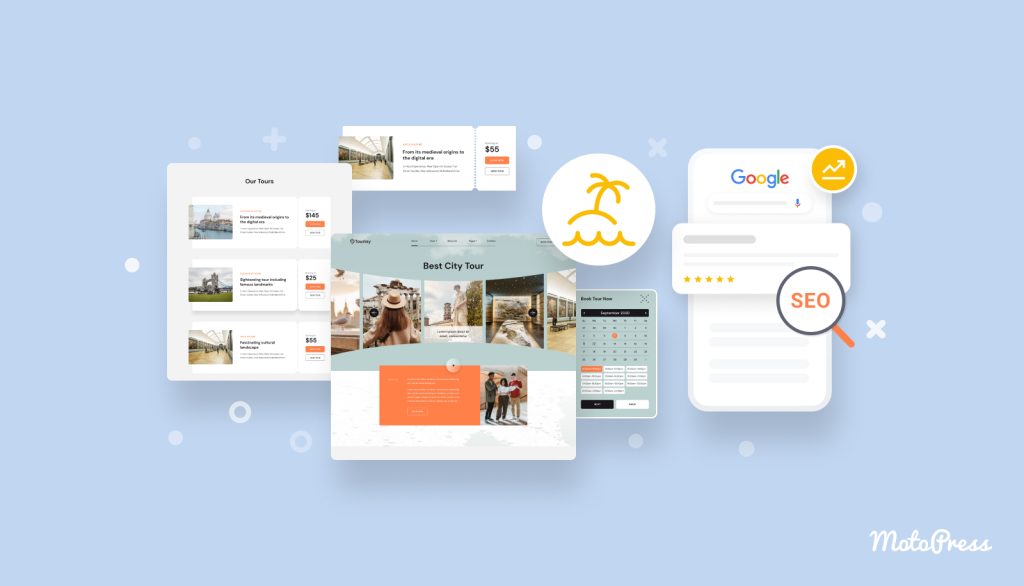
Link Building Strategies for Travel Websites
Creating high-quality and shareable content is an effective link building strategy for travel websites. By producing informative, entertaining, and visually appealing content, travel websites can attract natural backlinks from other websites, blogs, or social media platforms.
High-quality content can come in various forms, such as travel guides, destination-specific articles, travel tips, infographics, or videos. The key is to create content that is unique, well-researched, and provides value to the target audience. By offering something valuable and shareable, travel websites increase their chances of attracting natural backlinks.
To further enhance the linkability of content, travel websites can include social sharing buttons, embeddable images, or shareable quotes within the content. By facilitating the sharing of content, travel websites can increase their visibility and reach, and attract more backlinks.
Guest blogging and contributing to travel-related websites are effective ways to build backlinks and increase the visibility of a travel website. By guest blogging or contributing to reputable travel blogs or websites, travel websites can reach new audiences, establish themselves as industry experts, and attract referral traffic.
When guest blogging or contributing, it’s important to choose websites that are relevant to the travel industry and have a good domain authority. Travel websites should focus on creating high-quality and informative content that aligns with the target website’s audience and guidelines.
Guest blogging and contributing also provide an opportunity to include backlinks to the travel website within the content or author bio. By strategically placing backlinks in relevant and contextual places, travel websites can increase their chances of attracting referral traffic and improving their SEO.
Building relationships with influencers and bloggers
Building relationships with influencers and bloggers can significantly boost the link building efforts of a travel website. Influencers and bloggers have large online followings and can help promote the travel website to a wider audience through their social media channels, blogs, or vlogs.
Travel websites can start by identifying influencers and bloggers who have an engaged and relevant audience within the travel industry. They can reach out to them through email or social media and propose collaborations, such as sponsored content, guest posts, or social media promotions.
By partnering with influencers and bloggers, travel websites can leverage their existing audience, gain exposure, and increase their chances of attracting backlinks. It’s important to ensure that the collaborations are genuine and provide value to both parties involved.
Social media platforms provide travel websites with an opportunity to amplify their content, engage with users, and attract backlinks. By sharing high-quality and relevant content on social media, travel websites can increase their visibility and reach, and encourage users to share and link to their content.
When using social media for link building, travel websites should focus on creating engaging and shareable content that resonates with their target audience. They can utilize visual content, such as photos, videos, or infographics, to capture the attention of users and increase the chances of their content being shared or linked to.
It’s also important to actively engage with users on social media by responding to comments, answering questions, and participating in relevant discussions. By building a strong and engaged social media presence, travel websites can increase their chances of attracting backlinks and referral traffic.
Monitoring and disavowing toxic backlinks
Monitoring and disavowing toxic backlinks is an important aspect of link building for travel websites. Toxic backlinks are low-quality or spammy links that can harm the SEO and credibility of a website.
Travel websites should regularly monitor their backlink profile to identify any toxic or unnatural backlinks. They can use tools like Google Search Console or Moz’s Backlink Explorer to track and analyze their backlinks.
When toxic backlinks are identified, travel websites should take action to disavow or remove them. Disavowing backlinks involves informing search engines that the website does not want to be associated with or counted the backlinks. Travel websites can submit a disavow file through Google Search Console or other search engine webmaster tools.
By monitoring and disavowing toxic backlinks, travel websites can protect their SEO and ensure that their backlink profile consists of high-quality and relevant links.
Content Marketing for Travel Websites
Creating engaging travel guides and itineraries
Creating engaging travel guides and itineraries is a powerful content marketing strategy for travel websites. Travel guides and itineraries provide users with valuable information, recommendations, and insights to plan their trips effectively.
When creating travel guides and itineraries, travel websites should focus on addressing the needs and interests of their target audience. They should provide detailed and up-to-date information about destinations, attractions, accommodations, transportation, and local tips. Visual elements, such as photos or maps, can also enhance the engagement and appeal of the content.
By creating high-quality and informative travel guides and itineraries, travel websites can establish themselves as authoritative sources of information, attract organic traffic, and increase the chances of users booking through their website.
Promoting user-generated content and testimonials
Promoting user-generated content and testimonials is an effective way to engage users and build trust with potential customers. User-generated content includes reviews, ratings, photos, videos, or blog posts created by travelers who have used the services of a travel website.
Travel websites can encourage users to share their travel experiences and content by providing incentives or running contests. They can feature user-generated content on their website, social media platforms, or blog, and give credit to the users who created the content.
By promoting user-generated content and testimonials, travel websites can enhance the authenticity and credibility of their brand, attract new customers, and encourage repeat business.
Utilizing video and visual content
Video and visual content are highly engaging and shareable forms of content that can significantly boost the content marketing efforts of a travel website. Travel is a visual industry, and videos and visuals can effectively capture the attention and imagination of users.
Travel websites can create destination videos, travel vlogs, virtual tours, or visual galleries to showcase the beauty and unique aspects of various destinations. They can also utilize infographics, photos, or slideshows to present information in a visually appealing and easily digestible format.
By utilizing video and visual content, travel websites can increase their reach, engagement, and brand awareness. It’s important to optimize video and visual content for SEO by adding relevant tags, descriptions, and metadata.
Implementing a blog for travel updates and tips
Implementing a blog is a valuable content marketing strategy for travel websites. Blogs allow travel websites to regularly publish fresh, informative, and engaging content that attracts organic traffic, establishes expertise, and keeps users coming back for more.
When implementing a blog, travel websites should focus on creating content that is relevant and valuable to their target audience. They can cover a wide range of topics, such as travel tips, destination guides, industry news, packing lists, or travel trends.
It’s important to optimize blog content for SEO by including relevant keywords, using descriptive titles and headings, and adding internal and external links. Travel websites should also encourage user engagement by allowing comments, social sharing buttons, or subscriptions to the blog.
Optimizing content for voice search
As voice assistants like Siri, Alexa, and Google Assistant become more popular, optimizing content for voice search is becoming increasingly important for travel websites. Voice search queries are typically longer and more conversational than traditional typed queries, so travel websites should adapt their content to match the search intents of voice users.
To optimize content for voice search, travel websites should focus on using natural language and providing direct answers to common travel-related questions. They can create FAQ sections, write blog posts that answer specific questions, or include conversational phrases within their content.
It’s also important to include long-tail keywords and key phrases that are likely to be used in voice search queries. By understanding the specific needs and interests of voice users, travel websites can optimize their content for better visibility in voice search results.
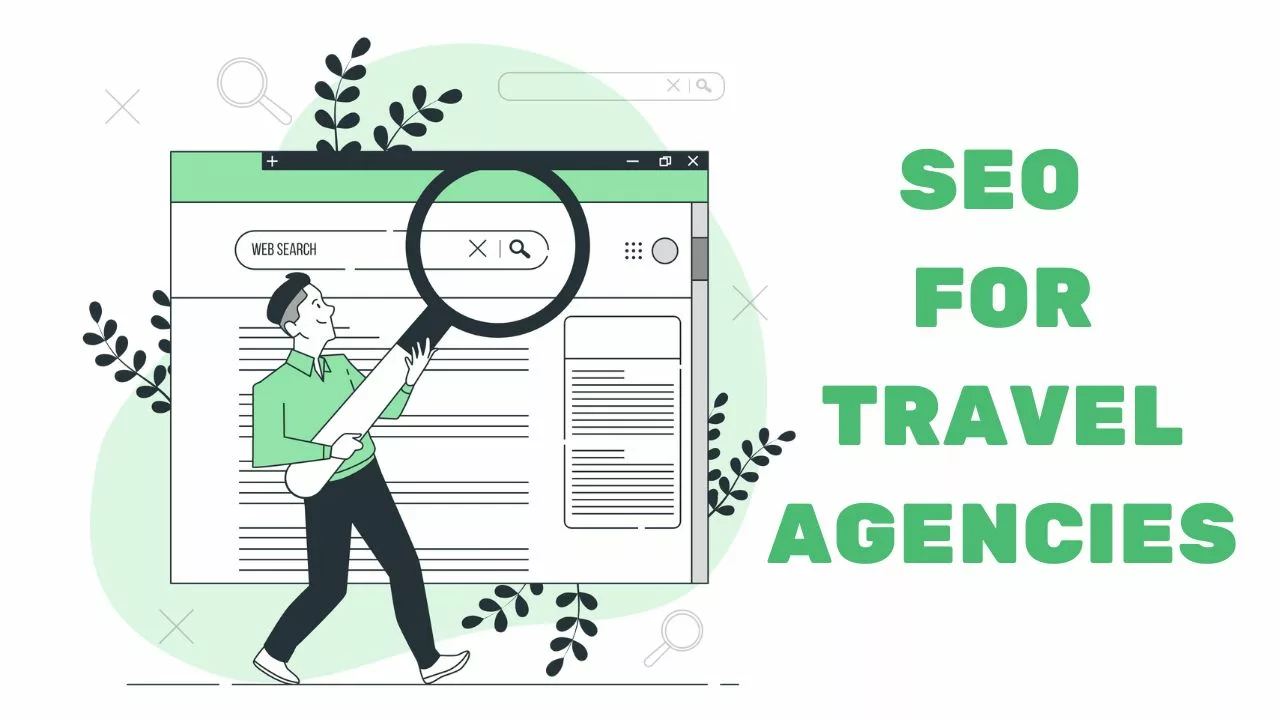
Social Media Optimization for Travel Websites
Creating a strong social media presence is a key component of social media optimization for travel websites. Social media platforms provide travel websites with an opportunity to connect with their target audience, showcase their brand, and promote their products or services.
When creating a social media presence, travel websites should choose platforms that are relevant to their target audience and industry. Popular platforms for travel websites include Facebook, Instagram, Twitter, Pinterest, and YouTube. It’s important to select platforms that align with the content and goals of the travel website.
Optimizing social media profiles and descriptions is essential for travel websites. Social media profiles serve as the first impression for potential followers or customers, so it’s important to make them visually appealing, informative, and engaging.
When optimizing social media profiles, travel websites should include relevant information, such as the website URL, contact information, and a brief description of the business. They should also incorporate relevant keywords and hashtags within the profile and description to improve the visibility of the profile in search results.
Additionally, travel websites should use high-quality and visually appealing images or videos as profile pictures and cover photos. Consistency in branding and tone of voice across different social media platforms is also important to create a cohesive and recognizable brand identity.
Sharing travel experiences and images
Sharing travel experiences and images is a powerful way to engage with followers, inspire potential customers, and build a loyal community on social media. Travel websites can share captivating photos or videos of destinations, landscapes, accommodations, or activities to spark interest and excitement.
It’s also important to share stories, anecdotes, or personal experiences related to travel. Travel websites can utilize features like Instagram Stories or Facebook Live to provide real-time updates, behind-the-scenes content, or Q&A sessions with travel experts.
By sharing travel experiences and images, travel websites can humanize their brand, create a sense of connection with followers, and encourage user engagement through likes, comments, and shares.
Using relevant hashtags and engaging with followers is crucial for increasing the reach and engagement of a travel website on social media. Hashtags help categorize content and make it discoverable by users who are searching for specific topics or interests.
When using hashtags, travel websites should focus on using relevant and popular hashtags that are specific to the travel industry or the content being shared. Travel websites can also create custom hashtags for specific campaigns or promotions to encourage user-generated content and participation.
Engaging with followers involves responding to comments, answering questions, and participating in discussions related to travel. By actively engaging with followers, travel websites can build a loyal community, enhance brand trust, and increase the chances of their content being shared or linked to.
Running social media contests and giveaways is a fun and effective way to increase followers, engagement, and brand awareness for a travel website. Contests and giveaways provide an incentive for users to follow, like, comment, or share the content of a travel website.
Travel websites can create contests or giveaways that align with their brand values and target audience. For example, a travel website can run a photo contest where users submit their best travel photos for a chance to win a free trip or a travel voucher.
Travel websites should clearly outline the rules, terms, and conditions of the contest or giveaway, and ensure that it complies with the guidelines of the social media platform. It’s also important to announce the winners and publicly acknowledge them to show transparency and credibility.
By running social media contests and giveaways, travel websites can expand their reach, attract new followers, and increase user engagement and participation.
Monitoring and Analyzing SEO Performance
Implementing Google Analytics and Search Console
Implementing Google Analytics and Google Search Console is essential for monitoring and analyzing the SEO performance of a travel website. Google Analytics provides valuable insights and data about website traffic, user behavior, conversions, and other important metrics.
Google Search Console, on the other hand, allows travel websites to monitor their website’s presence in Google’s search results and identify any issues or errors that may affect the website’s visibility.
By implementing these tools, travel websites can gain a deeper understanding of their website’s performance, identify areas of improvement, and make data-driven decisions to optimize their SEO strategy.
Tracking website traffic, rankings, and conversions
Tracking website traffic, rankings, and conversions is crucial for assessing the effectiveness of SEO strategies and identifying areas that need improvement. By tracking these metrics, travel websites can determine the success of their SEO efforts and make data-driven decisions.
Website traffic can be tracked using tools like Google Analytics or other web analytics platforms. Travel websites should monitor the total number of visitors, organic traffic, referral traffic, and other relevant traffic sources to understand the effectiveness of their SEO and content marketing strategies.
Rankings can be tracked using SEO tools like SEMrush or Moz. Travel websites should regularly check their keyword rankings in search engine results to assess their visibility and identify opportunities for improvement.
Conversions can be tracked using Google Analytics or other conversion tracking tools. Travel websites should set up goals or conversion tracking to measure the number of bookings, sign-ups, or purchases made through their website. This data helps in assessing the ROI of SEO efforts and identifying areas of improvement in the conversion funnel.
Analyzing user behavior and identifying areas of improvement
Analyzing user behavior is crucial for understanding how visitors interact with a travel website and identifying areas that need improvement. By analyzing user behavior, travel websites can optimize their website structure, content, and user experience to meet the needs and expectations of their target audience.
Travel websites can utilize tools like heatmaps or user recordings to visualize how users navigate through the website, where they click, and how far they scroll. This data can provide insights into user engagement, identify areas of interest or friction, and highlight opportunities for improvement.
Additionally, travel websites should analyze metrics like bounce rate, average session duration, and pages per session to evaluate the overall engagement and interest of users. High bounce rates or low session durations may indicate that the website’s content or user experience needs improvement.
By analyzing user behavior, travel websites can make data-driven decisions to optimize their website’s structure, navigation, content, and conversion funnel, ultimately improving the user experience and SEO performance.
Utilizing SEO reporting tools
Utilizing SEO reporting tools is an efficient way to monitor and present the performance of a travel website’s SEO efforts. SEO reporting tools provide comprehensive data, insights, and visualizations that help in understanding and communicating the impact of SEO strategies.
Some popular SEO reporting tools include SEMrush, Moz, Ahrefs, and Google Data Studio. These tools provide detailed reports on keyword rankings, backlinks, organic traffic, technical issues, and other important SEO metrics.
By utilizing SEO reporting tools, travel websites can automate the process of monitoring and reporting on SEO performance, save time and resources, and gain a deeper understanding of the effectiveness of their SEO strategies.
Regularly auditing and optimizing SEO strategies
Regularly auditing and optimizing SEO strategies is essential for maintaining the visibility and effectiveness of a travel website in search engine results. SEO is an ongoing process that requires regular monitoring, analysis, and updates to adapt to evolving search engine algorithms and user preferences.
Travel websites should conduct regular technical audits to identify and fix any issues or errors that may affect the website’s visibility or user experience. They should also analyze keyword rankings, search engine result pages (SERPs), and user behavior to identify trends, opportunities, and areas for improvement.
Content audits are also important to assess the quality, relevance, and performance of the website’s content. Travel websites should regularly update and optimize their content based on keyword research, user feedback, and industry trends.
By regularly auditing and optimizing SEO strategies, travel websites can stay ahead of the competition, maintain their visibility in search engine results, and provide a seamless user experience.

